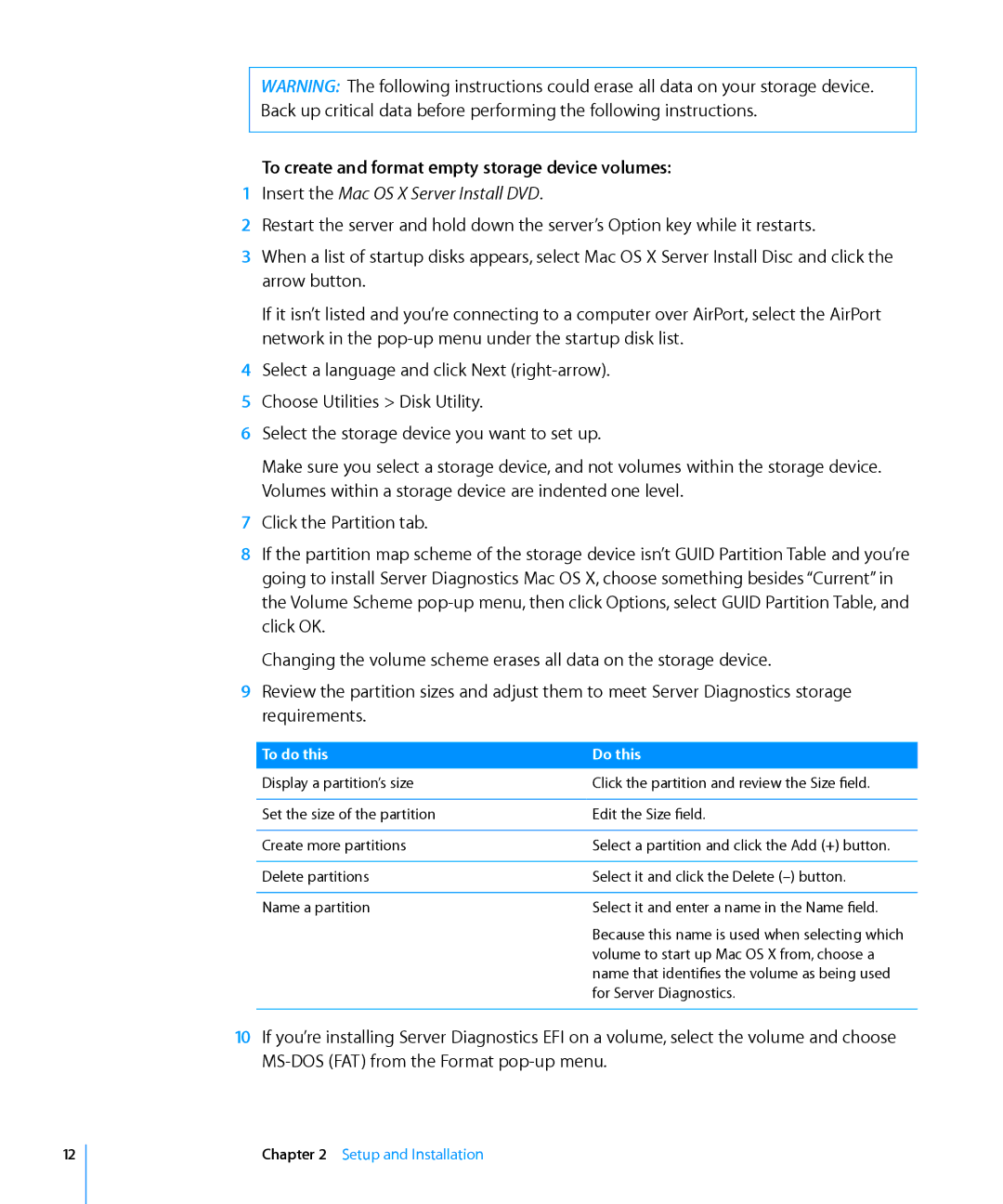
WARNING: The following instructions could erase all data on your storage device. Back up critical data before performing the following instructions.
To create and format empty storage device volumes:
1Insert the Mac OS X Server Install DVD.
2Restart the server and hold down the server’s Option key while it restarts.
3When a list of startup disks appears, select Mac OS X Server Install Disc and click the arrow button.
If it isn’t listed and you’re connecting to a computer over AirPort, select the AirPort network in the
4Select a language and click Next
5Choose Utilities > Disk Utility.
6Select the storage device you want to set up.
Make sure you select a storage device, and not volumes within the storage device. Volumes within a storage device are indented one level.
7Click the Partition tab.
8If the partition map scheme of the storage device isn’t GUID Partition Table and you’re going to install Server Diagnostics Mac OS X, choose something besides “Current” in the Volume Scheme
Changing the volume scheme erases all data on the storage device.
9Review the partition sizes and adjust them to meet Server Diagnostics storage requirements.
To do this | Do this |
Display a partition’s size | Click the partition and review the Size field. |
|
|
Set the size of the partition | Edit the Size field. |
|
|
Create more partitions | Select a partition and click the Add (+) button. |
|
|
Delete partitions | Select it and click the Delete |
|
|
Name a partition | Select it and enter a name in the Name field. |
| Because this name is used when selecting which |
| volume to start up Mac OS X from, choose a |
| name that identifies the volume as being used |
| for Server Diagnostics. |
|
|
10If you’re installing Server Diagnostics EFI on a volume, select the volume and choose
12
Chapter 2 Setup and Installation
